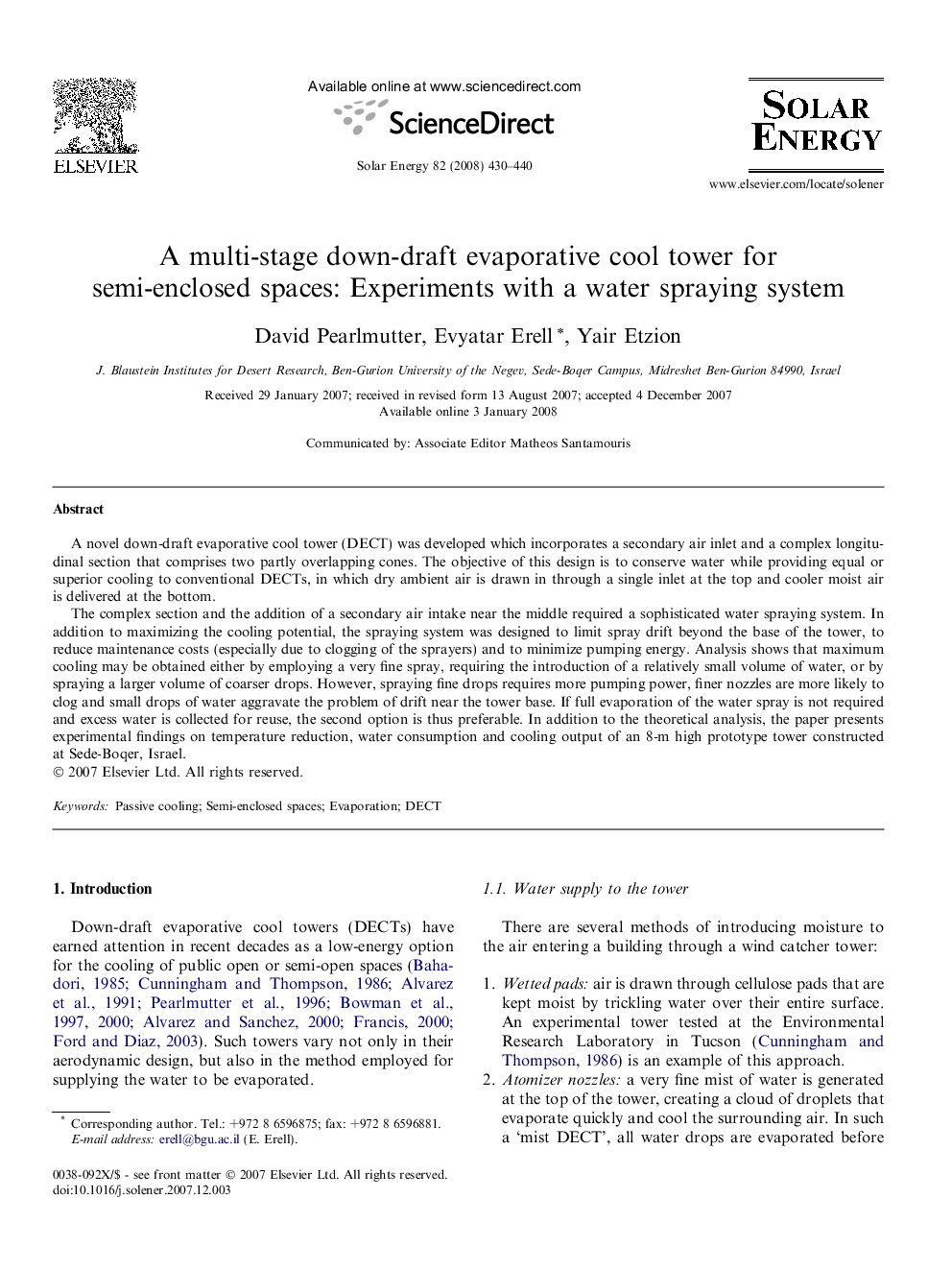| Article ID | Journal | Published Year | Pages | File Type |
|---|---|---|---|---|
| 1551354 | Solar Energy | 2008 | 11 Pages |
Abstract
The complex section and the addition of a secondary air intake near the middle required a sophisticated water spraying system. In addition to maximizing the cooling potential, the spraying system was designed to limit spray drift beyond the base of the tower, to reduce maintenance costs (especially due to clogging of the sprayers) and to minimize pumping energy. Analysis shows that maximum cooling may be obtained either by employing a very fine spray, requiring the introduction of a relatively small volume of water, or by spraying a larger volume of coarser drops. However, spraying fine drops requires more pumping power, finer nozzles are more likely to clog and small drops of water aggravate the problem of drift near the tower base. If full evaporation of the water spray is not required and excess water is collected for reuse, the second option is thus preferable. In addition to the theoretical analysis, the paper presents experimental findings on temperature reduction, water consumption and cooling output of an 8-m high prototype tower constructed at Sede-Boqer, Israel.
Keywords
Related Topics
Physical Sciences and Engineering
Energy
Renewable Energy, Sustainability and the Environment
Authors
David Pearlmutter, Evyatar Erell, Yair Etzion,
